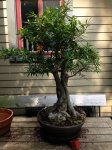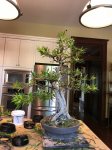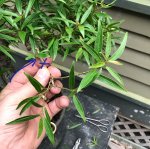markyscott
Imperial Masterpiece
... and lessons learned.
This was a tree I purchased in about 2008. Being a slow learner, I wasted a lot of years of work on the tree. I defoliated it a couple of times a summer and wondered why my growth was so poor and development was so slow. Starting in 2013, I completely changed my approach and I’m so much happier with the trees progress.
Here’s the tree in September 2012.

Scott
This was a tree I purchased in about 2008. Being a slow learner, I wasted a lot of years of work on the tree. I defoliated it a couple of times a summer and wondered why my growth was so poor and development was so slow. Starting in 2013, I completely changed my approach and I’m so much happier with the trees progress.
Here’s the tree in September 2012.

Scott





























